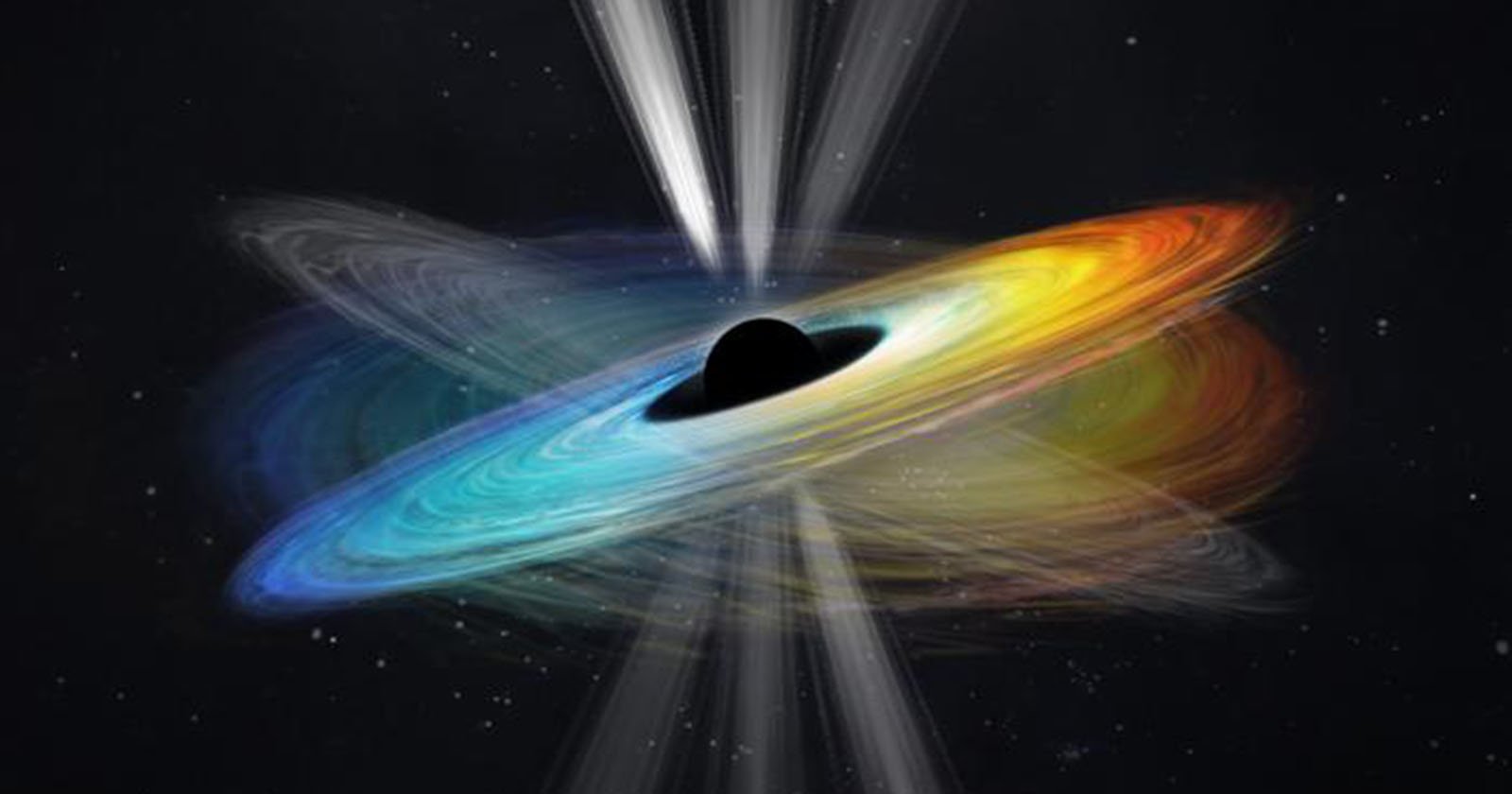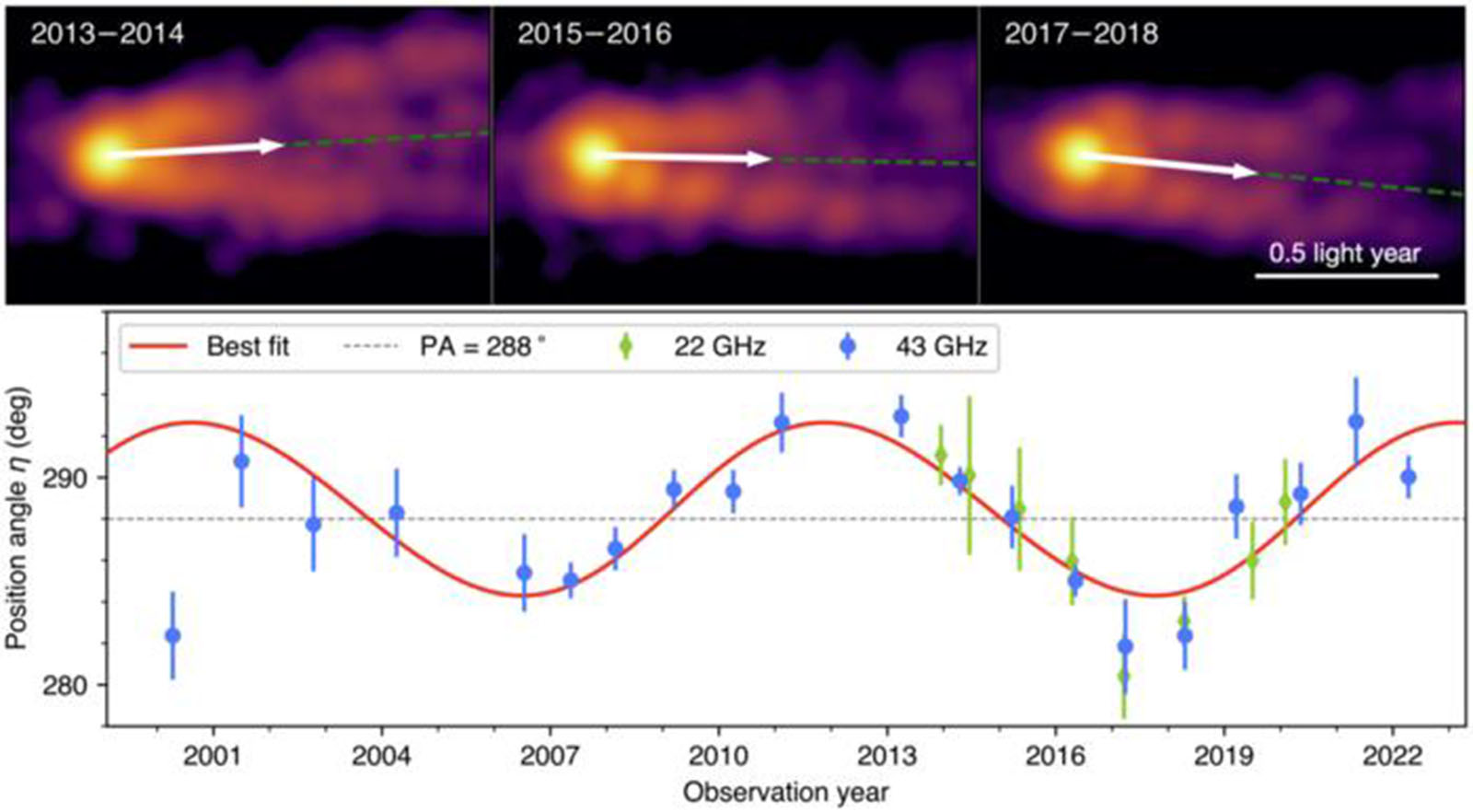First Black Hole Ever Photographed is Spinning, Scientists Confirm

Analyzing more than two decades of observational data collected by more than 20 telescopes, an international team of scientists says that the black hole at the center of the nearby M87 galaxy is spinning.
“After the success of black hole imaging in this galaxy with the Event Horizon Telescope (EHT), whether this black hole is spinning or not has been a central concern among scientists,” says Dr. Kazuhiro Hada from the National Astronomical Observatory of Japan. “Now anticipation has turned into certainty. This monster black hole is indeed spinning.”
The study, published this week in Nature, explains that the supermassive black hole at the center of M87, called M87*, features a recurring 11-year cycle of the motion of the jet base, as predicted by Einstein’s General Theory of Relativity. “The study links the dynamics of the jet with the central supermassive black hole, offering evidence that M87’s black hole spins,” states a press release.

The research team has been led by Dr. Cui Yuzhu, a postdoctoral researcher at Zhejiang Lab, a research institution in Hangzhou. “We are thrilled by this significant finding,” says Yuzhu. “Since the misalignment of the black hole and the disk is relatively small and the precession period is around 11 years, accumulating high-resolution data tracing M87’s structure over two decades and thorough analysis are essential to obtain this achievement.”
Supermassive black holes like M87* can “accrete tremendous amounts of material due to the extraordinary gravitational force and power of plasma outflows, known as jets, that approach the speed of light and extend thousands of light-years away,” the release explains.

The massive accretion disks and jets, observed for over a century, have long puzzled physicists. It has long been theorized that the mechanism could rely upon energy resulting from a spinning black hole. However, the spin of a black hole, perhaps the most essential characteristic of a black hole when explaining how it appears to function, has never been directly observed before.
M87’s powerful jet was recently observed in unprecedented detail by a different team of scientists, as seen below.
“As infalling materials orbit the black hole due to their angular momenta, they form a disk-like structure before gradually spiraling inwards until they are fatefully drawn into the black hole. However, if the black hole is spinning, it exerts a significant impact on surrounding spacetime, causing nearby objects to be dragged along its axis of rotation, a phenomenon known as ‘frame-dragging,’ which was predicted by Einstein’s General Theory of Relativity,” adds the release.
The groundbreaking new research indicates that the rotational axis of M87*’s accretion disk does not align with the black hole’s spin axis, which results in its “precessional jet.” Detecting the precession has proven instrumental in demonstrating that M87* is spinning, thereby significantly enhancing humanity’s understanding of supermassive black holes.
The research relies upon more than 170 epochs of observational data from the East Asian VLBI Network, the Very Long Baseline Array, the joint array of KVN and VERA, and the East Asia to Italy Nearly Global network. More than 20 telescopes contributed to the study, including radio telescopes in China.
There is still much to learn. While the new study shows evidence that supermassive black holes spin, there are still significant questions concerning accretion disk structures and the precise value of M87*’s spin rate. It is also critical that scientists discover and observe other black holes with a similar configuration, as predicted by the new study.
Located about 55 million light-years from Earth, M87* has been a major player in scientific breakthroughs concerning supermassive black holes. In 2019, it became the first supermassive black hole ever imaged.